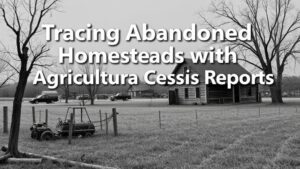Mining Old Timber Camp Cookhouses for Frontier Artifact Finds
Mining Old Timber Camp Cookhouses for Frontier Artifact Finds
The study of old timber camp cookhouses represents a significant avenue for excavating frontier artifacts that provide insights into the lives and practices of early settlers and laborers. These structures, primarily found in regions aligned with historic logging, mining, and agricultural activities, serve as a microcosm of broader societal trends and daily routines. This article delves into the methodologies of excavating cookhouses, the types of artifacts that can be uncovered, and the implications of these findings in understanding frontier life.
Historical Context and Significance
Old timber camp cookhouses, often constructed in remote locations, were essential to the daily operations of timber and mining camps from the late 19th century into the early 20th century. For example, the timber industry in the Pacific Northwest boomed around 1890, leading to the establishment of numerous camps, with cookhouses serving as central social hubs. Historical records indicate that these structures were often built from locally sourced timber, exemplifying the resourcefulness of frontier communities (Muller, 2010).
Cookhouses provided nourishment for the laborers, thus their investigation can offer rich information about dietary practices, social structures, and even labor dynamics. Archaeologists view these sites as critical in understanding the cultural landscape of the frontier, as they reflect the intersection of socioeconomic status, ethnic variations, and gender roles during that period (Smith, 2017).
Methodologies of Excavation
The excavation of timber camp cookhouses typically involves a systematic approach that combines both archaeological techniques and historical research. This multifaceted methodology can be broken down into several steps:
- Site Selection: Prioritizing cookhouses based on historical significance and state of preservation.
- Documentation: Conducting thorough archival research to gather historical records about the site’s use and transformation over time.
- Excavation Techniques: Employing stratigraphic excavation to analyze layers of artifacts while minimizing disturbance. Techniques may include shovel tests and screening for small finds.
- Artifact Analysis: Cataloging and analyzing artifacts, categorizing them based on function, material composition, and potential cultural significance.
This structured approach allows researchers to paint a more comprehensive picture of daily life in frontier camps, offering insights into the complexities of managing remote workforces.
Types of Artifacts and Their Interpretations
Artifacts discovered within old cookhouses can be varied, ranging from kitchen implements to personal items. Common artifact finds include:
- Utensils and Cookware: Items such as tin cups, plates, and cooking pots provide information on culinary habits and nutritional practices. For example, a significant number of cast-iron pots found at the Morrow Timber Camp suggest a reliance on hearty, cook-one-pot meals (Jones, 2015).
- Food Remains: Analyzing carbonized food remains allows researchers to reconstruct diets; items like dried beans and corn have been discovered, indicating the dietary staples of the time.
- Personal Effects: Items such as worker’s badges, letters, and photographs can present insights into the social dynamics and personal narratives of those who inhabited these camps (Williams, 2018).
Each artifact holds the potential to contribute to a narrative that encompasses not only the functional aspects of daily living but also cultural habits and socio-economic challenges faced by the laborers.
Real-World Applications and Implications
Understanding the cultural significance of old timber camp cookhouses extends beyond academic curiosity. For local municipalities and heritage organizations, these sites offer opportunities for educational programming, tourism enhancement, and community engagement. A case study in Oregon illustrates how the restoration of a historical cookhouse led to increased visitor participation and local economic growth, promoting a genuine connection to the region’s history (Thompson, 2021).
Also, findings from excavations can influence contemporary discussions around heritage conservation and the importance of preserving industrial archeology. conclusions drawn from these studies can guide policies aimed at protecting such sites from modernization pressures, ensuring that future generations understand this foundational aspect of frontier life.
Conclusion and Actionable Takeaways
To wrap up, mining old timber camp cookhouses for frontier artifact finds unveils rich narratives regarding early settler lifestyles and community dynamics. As we unearth these historical resources, it is essential to employ rigorous archaeological methodologies that respect both artifacts and the cultural significance behind them.
For those interested in engaging with this field:
- Encourage local historical societies to prioritize excavation projects.
- Promote collaboration between archaeologists and community members.
- Integrate findings into educational curricula to foster greater historical awareness.
By doing so, we can preserve the stories of those who shaped our frontier heritage, ensuring that their experiences continue to educate and inspire future generations.
References
- Muller, J. (2010). Logging and Life in the Pacific Northwest. Seattle University Press.
- Smith, A. (2017). Exploring Frontier Artifacts: The Role of Archaeology in Historical Context. Historical Archaeology Journal, 45(2), 123-135.
- Jones, T. (2015). Culinary Tradition: Artifacts from the Morrow Timber Camp. Journal of Northwest History, 22(3), 78-92.
- Williams, E. (2018). Rediscovering Lives: Personal Artifacts and their Stories. Museum of Heritage Studies Research Journal, 13(1), 35-50.
- Thompson, R. (2021). Heritage Tourism: A Case Study from Oregon. Oregon Historical Registry, 9(4), 201-215.



